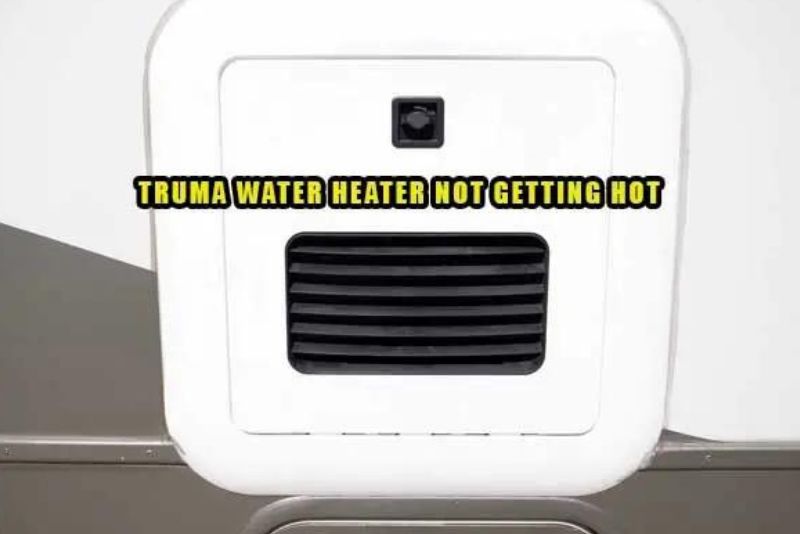It’s extremely frustrating to see your Truma water heater not getting hot. The main reasons behind this are:
- Gas supply issues.
- Power supply issues.
- Unit defects.
- High flow rate.
- Limescale accumulation.
We’ll discuss each of these issues in detail and learn how you can solve them in this guide. You’ll also know how to decalcify your heater when there’s a build-up of limescale build-up. So, let’s dive in!
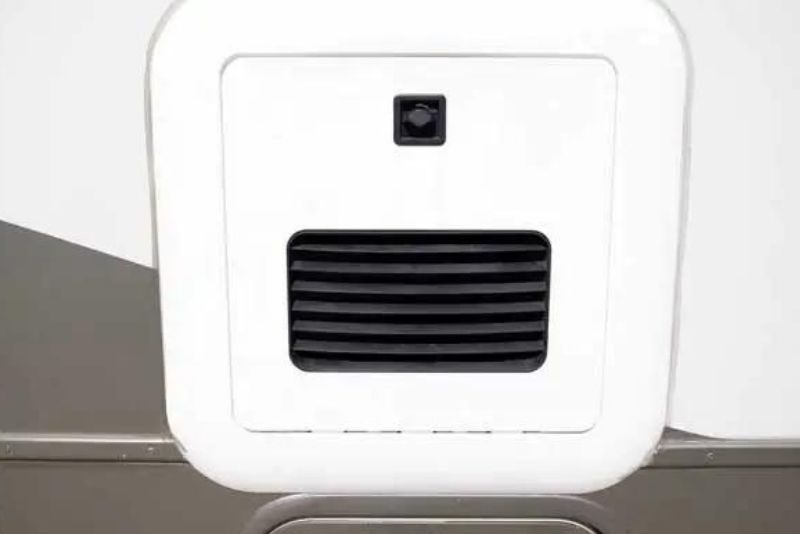
Truma Water Heater Not Getting Hot [5 Easy Fixes]
We’ll look at the primary reasons why you get little or no hot water from your Truma water heater in this section.
1. Gas Supply Issues
Sounds like a simple enough thing to check but you can’t ignore it. In Truma Aquago heaters, you can select the power source to either be gas or electric.
It’s obvious that you won’t be getting hot water at all when there’s no gas supply if that’s the power source.
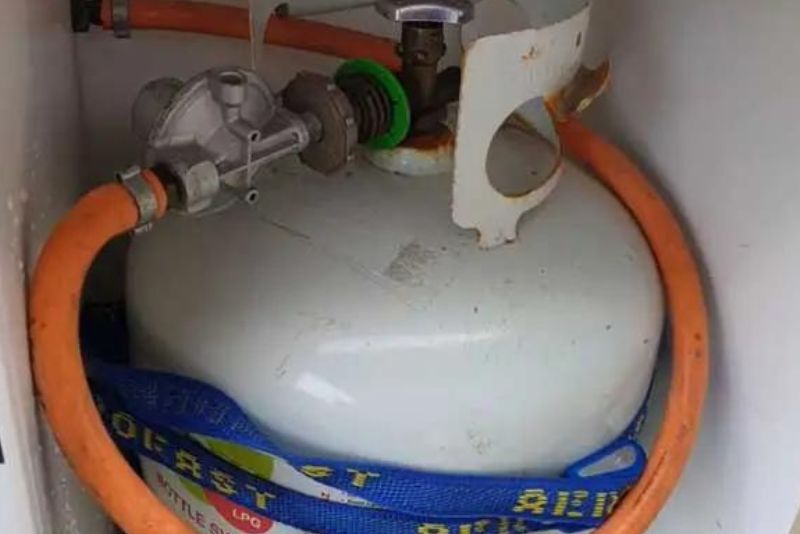
So, the first thing you have to do is make sure you have a gas supply. The common gas supply issues you’d come across are:
- Empty gas bottle.
- The gas supply is turned off.
- Low gas flow to the appliance.
Solution:
How you’d solve this problem depends on the root cause of the issue. Of the three reasons we discussed, the first two are easy to solve. You can replace or refill the gas tank if it’s empty.
Make sure that the gas supply is turned on and the valve is facing the right connection. The connection between the gas pipe and the gas tank should be tight for the gas to flow properly.
If you have a low gas flow to the appliance, it’s important to check the gas pressure. Generally, the gas pressure should be above 10.5 inches WC for the heater to work properly.
You can check it manually if you have a manometer. The gas line needs to have the capability to supply gas at that pressure. If not, you can get the gas supply inspected and replaced by a technician.
Remember that low gas flow creates little or abrupt hot water as opposed to no hot water at all. So, if you have no hot water, you won’t have to do all this work. Fixing the gas pressure is only worth considering if you get hot water but it’s not hot enough.
2. Power Supply Issues
This issue can also seem silly as most of you will have checked it. But it’s worth mentioning. Just like internet providers ask you to check if the modem is turned on, we’ll ask you to check if the heater is turned on.

The first thing to check is the knob on the control panel of your heater. If it’s directed to the “off” position, then no wonder that you’re not getting any hot water from the heater.
You may have turned it off directly in the Aquago heater. You’ll have to remove the access door to see if the power is turned off. The LED light will be green if the unit has power and functions without any issues.
There’s a power plug in the heater that may have also come off and gotten disconnected. When you drive through bumpy roads, it’s not uncommon for them to come off.
If you set the power source of the heater to electric, everything needs to be in order for it to ignite. It’s also common to unplug them for winterization and you may have just forgotten to plug it back.
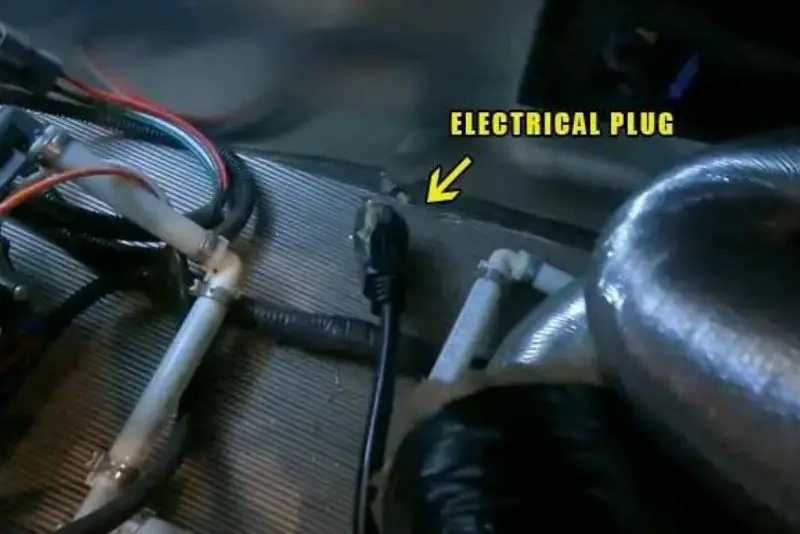
Inspect the power plug and see if it’s disconnected. Take a look at the picture above to see what a disconnected Truma Aquago heater plug looks like.
Solution:
If you’ve turned off the heater at the control panel, you can change the knob to the “Comfort” or “Eco” mode. The Eco mode is designed to save energy whereas the Comfort mode is designed to provide hot water instantly.
Turn on the power supply if it’s switched off at the heater itself. If the power plug has come off, you can just reconnect it and you’ll have hot water again. Make sure the freshwater supply is turned on as well to get consistent hot water from the heater.
3. Unit Defects
A wide range of issues with the heater can cause you to get no hot water. Starting from flames not being detected to the current being too high, a lot can go wrong with your heater.
The only bright side here is that you’ll know what the underlying issue is if you can read the codes displayed by the LED light. The sequence of short and long flashes of the red light will tell you what the error code means.
For example, 6 short and 1 long flashes mean that the flame hasn’t been detected. 5 short and 2 long flashes mean an issue with the error exhaust switch. Check the picture above to get an idea of the error codes.
Solution:
If you’re getting error codes from your heater and you don’t know what it means, look at your owner’s manual. If you turn to page 36, you’ll get instructions on the issue and how you can solve it.
There’s no cookie-cutter solution here as the solution to each problem is different. Hopefully, you’re dealing with an issue that’s easy to solve and you can get your heater to function normally in no time.
4. High Flow Rate
When the flow rate of the water is too high, the heater won’t have enough time to heat the water. So, you’ll get water that’s not hot enough from the hot water faucet even after turning up the temperature settings.

Another reason behind getting little hot water is that the cold water temperature is too cold. Your heater has limited capacity and as it’s tankless style, it lacks the ability to heat excessively cold water in such a short period.
Solution:
If you’re using multiple hot water faucets at the same time, you can resort to only using one at a time. That’ll bring down the flow rate of the water. The heater will have more time to heat the water and you should get sufficient hot water from your heater after doing that.
You can also retrofit a flow rate throttle in the water system if you want more control over monitoring and regulating the flow of water. If it’s the colder months and the cold water is simply too cold, you can turn up the temperature. If that doesn’t work, you’ll just have to wait it out.
5. Lime Scale Accumulation
The build-up of lime scale can also keep you from getting a steady supply of hot water. One of the common symptoms of limescale accumulation is hearing boiling noises from the heater.

If you hear that, we can bet that this is the main issue that’s causing insufficient hot water.
Solution:
If you’re dealing with limescale buildup in your Aquago instant water heater, the solution is simple – you have to decalcify the water heater. Now, there are a lot of steps to properly do the decalcification.
So, we’ve dedicated a section to it. We suggest you go through it and follow the steps properly to make sure you don’t do anything wrong in the process. Once you do that, hopefully, you’ll get hot water again.
How To Decalcify Truma Water Heater
We’ll be using original AquaGo decalcification tablets for this job. Make sure you don’t use other vinegar tablets as Trump doesn’t recommend it.
Using other tablets can cause hazardous reactions, damage your heater, and even make the warranty null and void. So, make sure you get the original tablets from your local Aquago leader or their website.

Another thing to keep in mind before we get into it is that you don’t want the decalcification agent to make constant with your skin. Make sure you’re proper protection gear and your eyes, face, and hands are safe at all times. Otherwise, it can cause skin irritation.
Refrain from using the water supply in your RV as well during this process. The entire decalcification process will take around 3 hours. You have to make sure you allow the full length. Otherwise, your appliance could be damaged.
The decalcification agent can also damage sensitive surfaces like marble. So, make sure that such surfaces don’t come into contact with it. With all those precautionary things in mind, you’re ready to decalcify your Truma Aquago heater. Follow these steps to do it:
Step 01 – Preparing The Heater For Decalcification
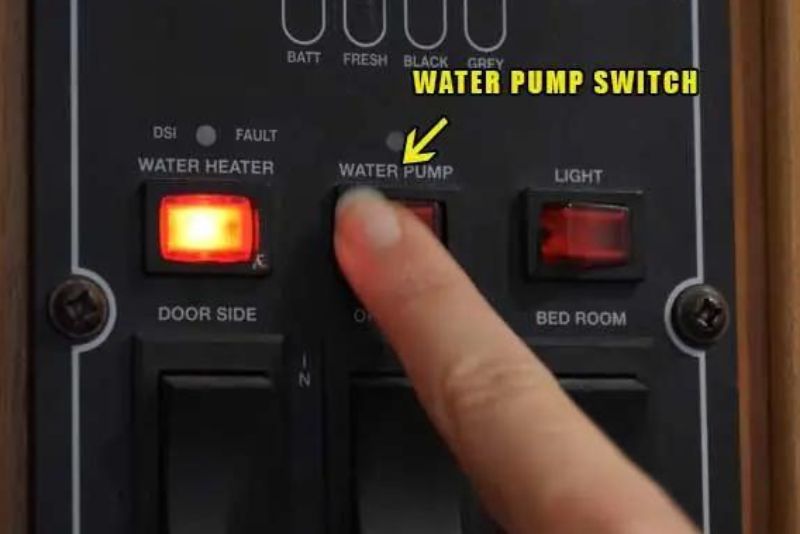
- Dial the control panel knob to the “off” position.
- Switch off the water pump.
- Relieve the pressure in the system by opening a hot water faucet.
- Put up a “Caution decalcification in progress” to warn others to not use the faucet and keep them protected. These signs come with the tablets.
Step 02 – Draining The Water System
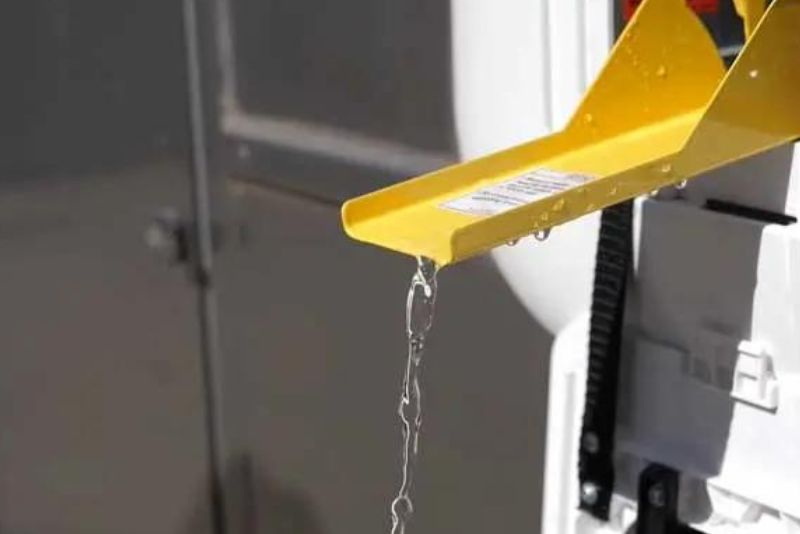
- Remove the access door of the heater.
- Turn off the power by pressing the power switch.
- Open all the hot water faucets to make sure that there’s only cold water remaining before draining.
- Open the latch and pull the Easy Drain lever as much as it’ll go.
- Place a bucket under the drain lever to catch the water that’ll come out of it.
- Remove the water inlet filter.
Step 03 – Putting The Tablets
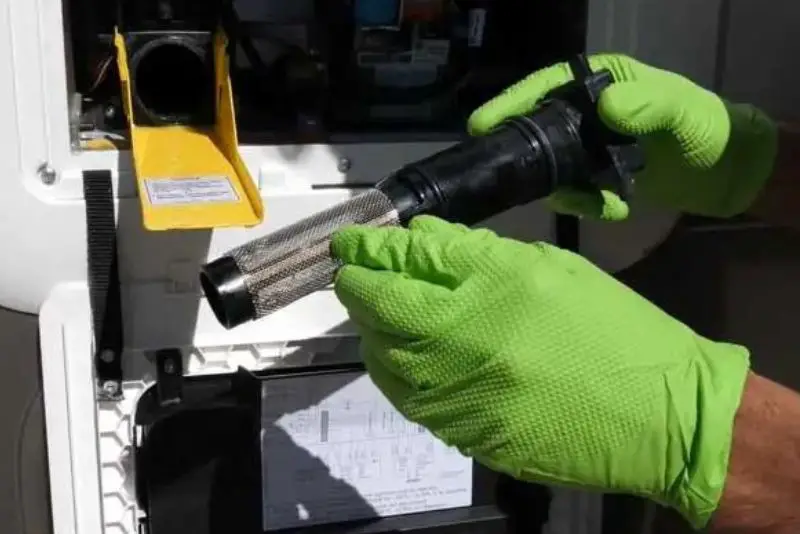
- Wear protective equipment to avoid direct contact with the tablets.
- Put six decalcification tablets in the water inlet filter.
- It’s time to reinstall the filter. Before you do that, check that the O-rings aren’t cracked. If they are, they need to be replaced.
- Use a small amount of soap on the O-rings if you’re having difficulty putting the filter on.
- Close the Easy Drain lever until you hear a clicking sound.
- Turn the power switch on and close the access door.
Step 04 – Filling The System With Water
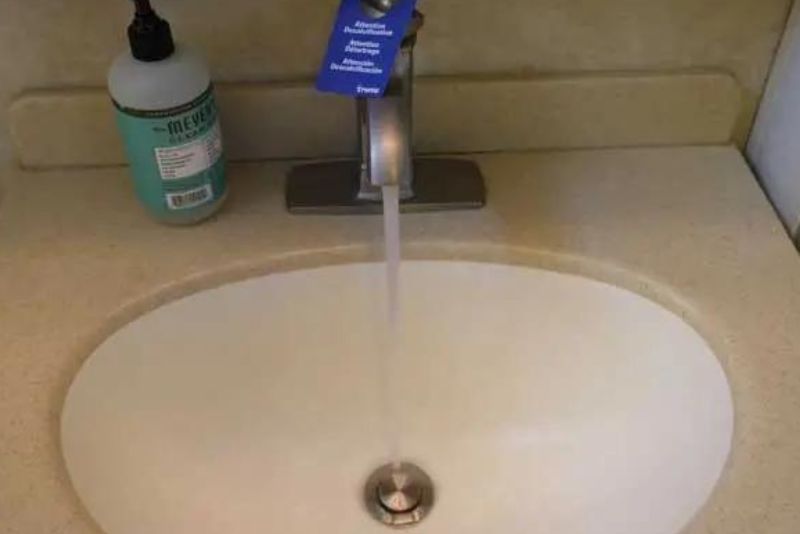
- Turn on the freshwater supply to the heater.
- It takes around ten minutes for the tablets to dissolve in water so that the decalcification agent doesn’t get rinsed.
- Open all hot water faucets until water flows steadily.
- Once water flows uniformly, you can be sure that the system is vented and close the hot water faucets.
Step 05 – Starting The Decalcification Process

- Switch the knob at the control panel to the “Clean” position.
- Decalcification will be done automatically and you have to let it run for at least 3 hours.
- When the decalcification starts, you’ll see a short one-second flash and one second off blinking of the status LED light.
- You’ll know when the decalcification is complete as the LED status light on the control panel will flash quickly.
Step 06 – Rinsing The Water System
- Get rid of the decalcification solution in accordance with the laws and collect 8 gallons of water to rinse the system.
- Open all hot water release points and let them run until the LED status light on the control panel stops blinking.
- Set the control panel to “Off” and close the water release points.
- Turn off the water supply and open the hot water to relieve the pressure inside the system.
- At the heater itself, switch off the power and let the water drain again.
- Reinset the water filter, turn the heater on, and close the access door by turning the lock clockwise.
Step 07 – Refilling The Water System
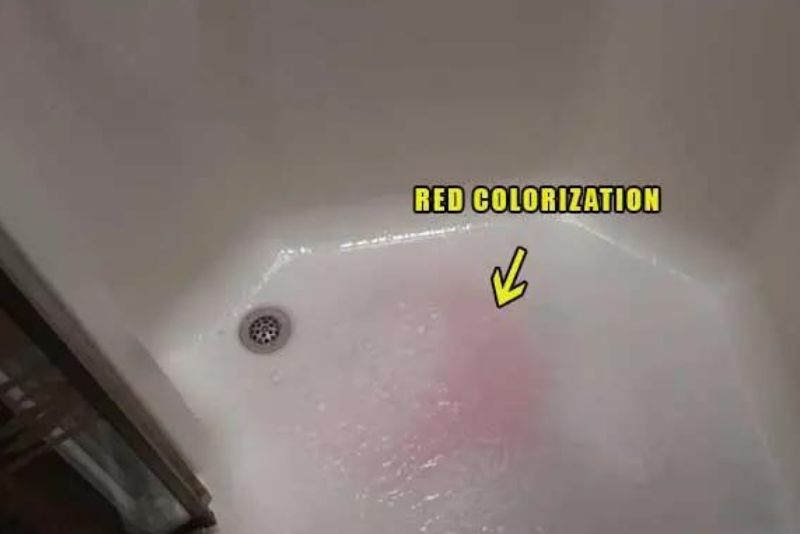
- Turn on the water supply.
- Open all hot water faucets until you get a steady water flow from them. Once you do, you can close them.
- If the water is red, you need to rinse the system again as there are still traces of the decalcification agent.
- If the water is clear, you’re done.
- Remove the warning signs you installed and you’re good to go.
That’s all you have to do to remove the sediment buildup from your heater. If that sounds like a lot of work and you don’t want to do it on your own, you can always hire a Truma service partner to do it for you. Once it’s done, you should get adequate hot water from your heater.
FAQs:
Should you decalcify the water heater during extremely cold weather?
When the ambient temperature is too low, the pipes and faucets can be frozen. So, it’s not a good idea to decalcify the water heater during that time.
What’s the water temperature of Truma heaters in Eco and Comfort modes?
In Eco mode, the temperature of the water is around 41 °F. In Comfort mode, it’s at a minimum of 102 °F. But that’s the water inside the heater. It’ll be above 120 °F at the hot water faucets.
How often should you decalcify the Truma Aquago water heaters?
It depends on how hard the water is and what’s your level of use. You should do it at least once a year even if you have soft water. If you use hard or very hard water, you need to do it 3-4 times a year.
How to protect your Truma water heater from freezing?
You can get an electric antifreeze kit that’s available as an accessory and install it. The temperature will be automatically kept above 41 °F if you use it.
Conclusion
Now, you know the most common reasons behind the Truma water heater not getting hot and how you can solve them. It’s important that you remain patient and deal with one issue at a time.
If you do that, you’ll find the problem more quickly and solve it early on as well. Hopefully, it will be a simple issue and it won’t take long to solve it. Drop a comment below if you have any more questions about Truma water heaters issues.
